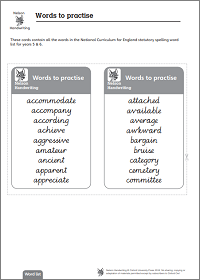Handwriting in Year 5 (age 9–10)
In Year 5, your child will develop fluent joined-up writing, written in the appropriate way for different contexts.
Read on to discover the National Curriculum expectations for handwriting in Year 5, and to find out how you can support your child at home.
What your child will learn
In Year 5 (age 9–10), your child will learn to:
-
- Choosing which shape of a letter to use when given choices and deciding whether or not to join specific letters
- Choosing the writing implement that is best suited for a task.
How to help at home
There are lots of ways you can help your Year 5 child with handwriting. Here are our top ideas.
1. Try arts and crafts
Give your child opportunities to do arts and craft activities that allow them to experiment with a wide range of materials. For example, see if they can write with chalk, paintbrushes, felt tips, or crayons.
If you’re at the beach, you could try writing in the sand. This gives your child lots of freedom to try different things without the pressure of having to get it right first time – if their handwriting isn’t perfect, they can just wash or brush it away and start again.
2. Read a variety of books
Choose texts for your child that show a wide variety of formats and layouts. Be sure not to neglect non-fiction texts, such as magazine articles, brochures, adverts, newspaper columns, signs, and notices.
Showing your child these kinds of texts will give them experience reading in a real-world context, and will also prepare them for national assessments where they are expected to engage with a wide variety of text types. Make sure you talk together about how the texts are presented – the writing may look different depending on what kind of text you are looking at.
3. Write, write, write
Be on the look out for everyday opportunities for your child to practise their handwriting. For example, they could write out the shopping list that you dictate, mark events on the calendar, make greetings cards for family members, write out recipes or song lyrics, and so on. Try to find opportunities that link to their interests.
Be sure to find out what handwriting style your child is learning at school. Consistency is essential at this stage, so it is important not to correct something that you think is an error but that is actually part of the style your child is learning.
Activity: Practice tramlines

Print out these tramlines for your child to practise neat handwriting.
Activity: Words to practise in Year 5

High-frequency word flashcards for your Year 5 or Year 6 child to practise.
